DC and CC 1/3/5/6/8series Mill Finish Aluminium coil
- Loading Port:
- Shanghai
- Payment Terms:
- TT OR LC
- Min Order Qty:
- 2.5
- Supply Capability:
- 5000 m.t./month
OKorder Service Pledge
OKorder Financial Service
You Might Also Like
Item specifice
DC and CC 1/3/5/6/8series Mill Finish Aluminium coil
l Product Introduction
Aluminium Coil is widely used in manufacturing aluminum thin sheet and aluminum foil. It is suitable for further machining with original standard quality. It is easy to be controlled and be manufactured to according to requirements.
l Product Specification
1.Aluminium coil application: building, celling, roofing, refrigerator, etc.
2.DC (hot rolling) and CC (continue cast) production lines, good perpority, no wave, no scratch
3.General alloy temper and specification see below table:
Product | Alloy | Temper | Size (mm) | Remark | ||
Thickness | Width | I.D. (mm) | ||||
Aluminum Coil | 1070 1060 1050 1145 1235 1035 1100 1200 3A21 3003 3004 3105 3103 8011 5052 5005 5754 6061 6063
| H18 H16 H26 H14 H24 O | 0.2-7.0 | 660-2200 | 150-600 | Edge without sheared |
l Packaging & Delivery
Packaging detail: Standard seaworthy exporting carton, Wooden pallets, waterproof paper and plastic coverage or as customer's requirements
Delivery detail: about 25 days from received oiginal L/C or advanced payment

l Company Profile
CNBM International Corporation, China National Building Materials (Group) Corporation, is one of the largest companies in China building material & equipment industry, with 42,800 employees and sales in 2005 of US Dollar 4.395 billion. In 2006, China National Building Material Company Limited was listed on Hong Kong Stock Market with the stock code as 3323.
Aluminium coil is one of the popular product in the market of CNBM. With advanced technology and equipment, CNBM has sold its hight quality color coated aluminium coil to the world.
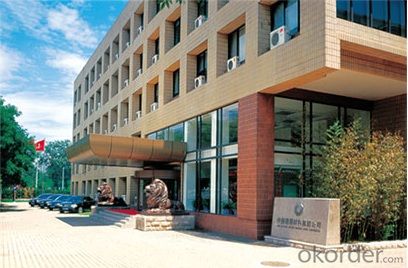
l CNBM World Wide

l Product Images
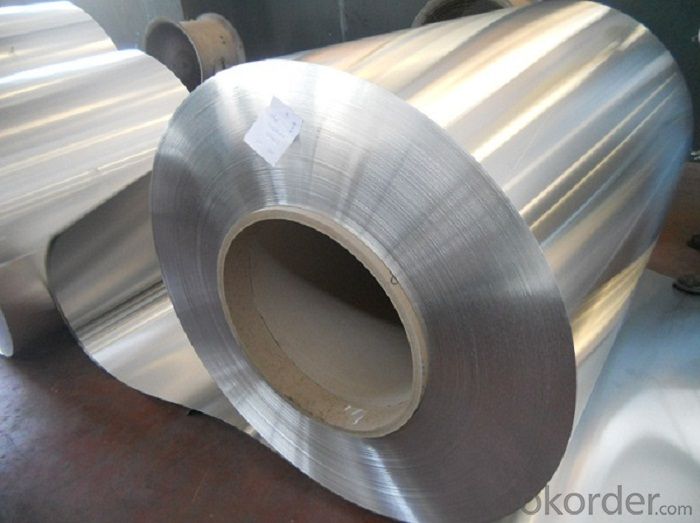
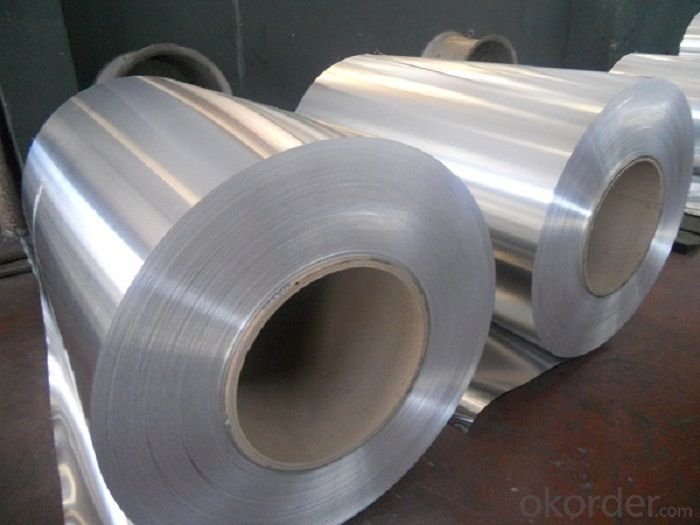
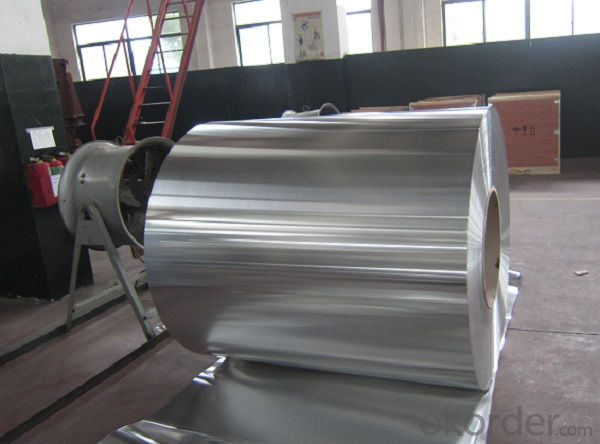
l Certificates
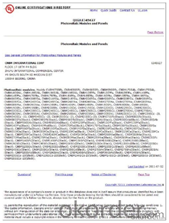
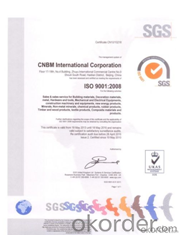
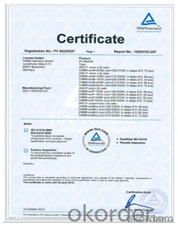
l FAQ
Q: Do you provide free samples?
A: Yes, free samples will be sent to you on freight at destination.
Q: Can I get your latest products catalogue?
A: Yes, it will be sent to you in no time.
Q: What is the MOQ?
A: 2.5 tons
Q: What are your payment terms?
A: We accept L/C, T/T.
- Q:What is the corrosion resistance of aluminum coils?
- Aluminum coils have excellent corrosion resistance due to the formation of a protective oxide layer on their surface. This oxide layer acts as a barrier, preventing further corrosion and making aluminum coils highly resistant to various environmental conditions and corrosive elements.
- Q:What are the different coil handling equipment options for aluminum coils?
- When it comes to handling aluminum coils, there are several equipment options available that cater to the specific requirements and preferences of the user. Here are some commonly used options: 1. Coil Lifters: Specially designed lifting devices, coil lifters efficiently and securely handle aluminum coils. They typically consist of clamps or hooks attached to a lifting mechanism. Coil lifters can be manually operated or powered by electricity or hydraulics, ensuring ease of use and increased productivity. 2. Coil Tippers: Used for rotating or tilting aluminum coils, coil tippers facilitate loading, unloading, and positioning. Equipped with adjustable arms or clamps, they securely hold the coil during rotation. Control options include manual or hydraulic and electric systems for precise movements. 3. Coil Cars: Coil cars are transport vehicles designed for moving aluminum coils within a manufacturing facility or between areas. They have a platform or carriage where the coil is placed, and various mechanisms for loading, unloading, and positioning. Coil cars can be manually operated or powered by electricity or hydraulics, enhancing efficiency. 4. Coil Turnstiles: For safe and efficient storage and retrieval of aluminum coils in a vertical position, coil turnstiles are used. They typically consist of a rotating drum or spool capable of holding multiple coils, providing easy access. Coil turnstiles can be manually operated or powered by electricity or hydraulics, offering quick and convenient storage solutions. 5. Coil Cradles: Coil cradles are used to support and protect aluminum coils during storage or transportation. They feature a sturdy frame or structure with adjustable arms or supports that securely hold the coil. Coil cradles can be customized to accommodate different coil sizes and weights, ensuring safe and stable handling. In conclusion, these coil handling equipment options offer various solutions for efficient and safe handling of aluminum coils, improving manufacturing processes and productivity. The choice of equipment depends on factors such as coil size, weight, specific operation requirements, and available budget.
- Q:What are the common surface treatments for aluminum coils in the automotive industry?
- Aluminum coils in the automotive industry undergo various surface treatments to improve their performance and appearance. Some popular treatments include anodizing, painting, cladding, clear coating, and polishing/buffing. Anodizing is a widely used treatment that forms a protective oxide layer on the surface of the coils. This is achieved by immersing the coils in an electrolytic solution and applying an electric current. Anodizing enhances corrosion resistance, durability, and allows for dye or paint application. Painting is another option for aluminum coil treatment, providing both aesthetics and protection against environmental factors. Coils are coated with either solvent-based or powder paint, offering an appealing appearance and safeguarding against scratches and UV radiation. Cladding involves bonding a layer of aluminum alloy with different properties onto the coil's surface. This treatment is commonly employed to enhance strength, thermal conductivity, or corrosion resistance. Cladding methods can include hot rolling, cold rolling, or explosive bonding. Clear coating is often applied to aluminum coils to create a transparent protective layer. This coating prevents corrosion, oxidation, and discoloration, while preserving the natural metallic appearance. Polishing and buffing are surface treatments that aim to improve the smoothness and shine of aluminum coils. Imperfections, scratches, and oxidation are mechanically removed through grinding or polishing. These methods are often used for decorative purposes in high-end automotive applications. These are merely a few examples of the surface treatments available for aluminum coils in the automotive industry. The choice of treatment depends on factors such as desired appearance, performance requirements, and environmental conditions the coils will face.
- Q:What are the common surface cleaning methods for aluminum coils?
- There exist various effective surface cleaning techniques for aluminum coils, which can eradicate dirt, debris, and other impurities. Among the most frequently employed methods is pressure washing. This involves utilizing a high-pressure water spray to dislodge and eliminate any dirt or grime from the coil's surface. Pressure washing can be conducted using specialized equipment or simply a regular garden hose with a spray nozzle attachment. Chemical cleaning serves as another popular approach for cleansing aluminum coils. This method entails utilizing specific cleaning agents or solvents, specially formulated to break down and eradicate dirt and impurities from the coils' surface. These chemicals are typically applied using a spray bottle or a pump sprayer and then rinsed off with water after a designated period. Steam cleaning represents another effective technique for cleaning aluminum coils. This involves employing high-temperature steam to loosen and eliminate dirt and grime from the coil's surface. Steam cleaning is often used in conjunction with a cleaning agent or solvent to enhance its efficacy. In addition to these methods, there are specialized tools available, such as coil cleaning brushes or fin combs, which can be utilized to physically remove any debris or build-up from the coil surfaces. These tools prove particularly useful for eliminating smaller particles or debris that may be trapped in between the fins of the coils. It is essential to note that when cleaning aluminum coils, it is crucial to adhere to the manufacturer's recommendations and guidelines to ensure the cleaning process is conducted safely and effectively. Additionally, regular cleaning and maintenance of aluminum coils can promote their longevity and preserve their efficiency.
- Q:Are aluminum coils resistant to fire?
- Yes, aluminum coils are generally considered to be resistant to fire. Aluminum has a high melting point of 660 degrees Celsius, which is significantly higher than the average temperature of most household fires. This makes aluminum coils a popular choice for various applications where fire resistance is required, such as in the construction of buildings, electrical systems, and automotive components. Additionally, aluminum has a low flammability and does not produce toxic fumes when exposed to fire, further enhancing its fire-resistant properties. However, it is important to note that the fire resistance of aluminum coils can vary depending on the specific alloy used and the thickness of the coil. Therefore, it is always recommended to consult with experts or refer to industry standards to ensure the appropriate fire safety measures are taken.
- Q:Are there any limitations on the surface treatment of aluminum coils?
- Yes, there are limitations on the surface treatment of aluminum coils. One limitation is the type of surface treatment that can be applied to aluminum coils. Aluminum coils can be treated with various surface finishes such as anodizing, painting, and powder coating. However, not all surface treatments are suitable for all applications. For example, anodizing is a durable and corrosion-resistant finish, but it may not be suitable for applications that require a specific color or design. Similarly, painting and powder coating can provide a wide range of colors and aesthetics, but they may not provide the same level of durability as anodizing. Another limitation is the size and shape of the aluminum coils. Surface treatment processes may have limitations in terms of the size and shape of the aluminum coils that can be treated. For example, anodizing is typically done in tanks or racks, which may have size restrictions. Similarly, painting and powder coating processes may require specific equipment or facilities that may not be able to accommodate large or irregularly shaped coils. Additionally, the condition of the aluminum surface can also impact the effectiveness of the surface treatment. Aluminum coils may have imperfections or surface defects that can affect the adhesion and durability of the surface treatment. Proper cleaning and preparation of the aluminum surface are essential to ensure the effectiveness of the surface treatment. In summary, while there are various surface treatments available for aluminum coils, there are limitations in terms of the type of treatment that can be applied, the size and shape of the coils, and the condition of the aluminum surface. It is important to consider these limitations and select the most suitable surface treatment based on the specific requirements and constraints of the application.
- Q:How do aluminum coils contribute to energy-efficient lighting?
- Aluminum coils play a crucial role in enhancing the energy efficiency of lighting systems. The primary advantage of using aluminum coils in lighting applications is their excellent thermal conductivity. Aluminum has a high thermal conductivity, which means it can efficiently transfer heat away from the light source and dissipate it into the surrounding environment. This property helps to prevent the overheating of lighting fixtures and ensures the longevity and efficiency of the lighting system. Furthermore, aluminum coils are lightweight and possess a high strength-to-weight ratio, making them ideal for creating compact and durable lighting fixtures. By using aluminum coils, manufacturers can design and produce lighter and more efficient lighting products, reducing the overall energy consumption. Additionally, aluminum coils are highly reflective, enabling them to efficiently distribute and reflect light. This characteristic allows for better light output and ensures that a larger portion of the emitted light is effectively utilized, reducing energy waste. Moreover, aluminum is a highly recyclable material, meaning it can be reused and repurposed multiple times without losing its qualities. The recyclability of aluminum coils contributes to the overall sustainability of energy-efficient lighting systems, reducing the environmental impact associated with their production and disposal. In summary, aluminum coils contribute to energy-efficient lighting by efficiently dissipating heat, reducing energy consumption through lightweight designs, optimizing light distribution, and promoting sustainability through recyclability.
- Q:Can aluminum coils be used for decorative purposes?
- Yes, aluminum coils can be used for decorative purposes. Aluminum is a versatile material that can be easily shaped and manipulated, making it suitable for a wide range of decorative applications. Aluminum coils are often used to create decorative trim, accents, and borders in various industries such as architecture, interior design, and automotive design. They can be painted or coated with different finishes to enhance their visual appeal and match the desired aesthetic. Due to their lightweight nature and durability, aluminum coils are also commonly used for decorative purposes in outdoor settings, such as garden ornaments, sculptures, and signage. Overall, aluminum coils offer a cost-effective and aesthetically pleasing option for incorporating decorative elements into various projects.
- Q:What are the common problems faced with aluminum coils?
- There are several common problems that can be faced with aluminum coils. One of the most common issues is corrosion. Aluminum coils are susceptible to corrosion, especially when they are exposed to moisture. This can lead to the formation of rust or other types of corrosion, which can weaken the coil and affect its performance. Another common problem is coil damage. Aluminum coils can be easily damaged during handling or transportation. This can result in bent or dented coils, which can impact their efficiency and lifespan. In severe cases, the coil may even develop leaks or cracks, causing refrigerant or coolant to leak out. Clogging is another issue that can occur with aluminum coils. Over time, dust, dirt, and debris can accumulate on the coil, obstructing the airflow and reducing the coil's efficiency. This can result in poor cooling or heating performance, higher energy consumption, and increased wear and tear on the system. Additionally, aluminum coils can suffer from coil leaks. These leaks can occur due to a variety of reasons, such as physical damage, corrosion, or manufacturing defects. When a coil develops a leak, it can lead to refrigerant or coolant leakage, which can affect the overall performance of the HVAC system. Lastly, improper installation or maintenance practices can also cause problems with aluminum coils. If the coil is not installed correctly or if regular maintenance is neglected, it can lead to issues such as poor airflow, inefficient cooling or heating, and increased energy consumption. In order to avoid these common problems, it is important to properly maintain aluminum coils by regularly cleaning them, inspecting for any signs of damage or corrosion, and ensuring proper installation and handling. Regular maintenance and timely repairs can help minimize the occurrence of these problems and ensure the longevity and efficiency of the aluminum coils.
- Q:What are the different pre-treatment methods for aluminum coils?
- Aluminum coils can undergo various pre-treatment methods to prepare their surface for further processing or coating. These methods serve different purposes and can be chosen based on specific requirements. One pre-treatment method is degreasing, which eliminates oils or greases on the coil surface. Solvents or alkaline cleaners are used for degreasing, depending on the application's needs. Etching is another pre-treatment method that removes surface oxides or contaminants from the aluminum coils. This can be achieved through acidic solutions or mechanical techniques like sandblasting or brushing. Phosphating, a commonly used pre-treatment method, involves applying a phosphate coating to the coil surface. This coating enhances adhesion for subsequent coatings or paints and provides corrosion resistance. Conversion coating is a popular pre-treatment method that forms thin layers of inorganic compounds on the coil surface. These coatings improve adhesion for subsequent coatings or paints and offer corrosion resistance. Common conversion coatings for aluminum include chromate, chromate-free, or anodizing. To summarize, the pre-treatment methods for aluminum coils include degreasing, etching, phosphating, and conversion coating. Each method has a specific purpose in preparing the coil surface for further processing or coating, chosen based on the application's requirements.
1. Manufacturer Overview |
|
|---|---|
| Location | |
| Year Established | |
| Annual Output Value | |
| Main Markets | |
| Company Certifications | |
2. Manufacturer Certificates |
|
|---|---|
| a) Certification Name | |
| Range | |
| Reference | |
| Validity Period | |
3. Manufacturer Capability |
|
|---|---|
| a)Trade Capacity | |
| Nearest Port | |
| Export Percentage | |
| No.of Employees in Trade Department | |
| Language Spoken: | |
| b)Factory Information | |
| Factory Size: | |
| No. of Production Lines | |
| Contract Manufacturing | |
| Product Price Range | |
Send your message to us
DC and CC 1/3/5/6/8series Mill Finish Aluminium coil
- Loading Port:
- Shanghai
- Payment Terms:
- TT OR LC
- Min Order Qty:
- 2.5
- Supply Capability:
- 5000 m.t./month
OKorder Service Pledge
OKorder Financial Service
Similar products
New products
Hot products
Related keywords




























